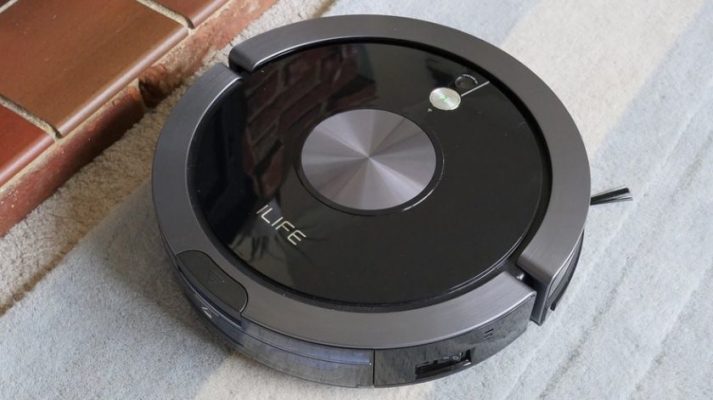How the iLife A9 robot vacuum reviews can help you? The iLife A9 robot vacuum is a top-performing robot vacuum new to the iLife family. It has powerful suction, solid cleaning performance, and up to a 100-minute run time. You can adjust cleaning modes using the physical buttons or via an app on your smartphone. Use the remote control to manually drive the robot around or schedule a cleaning for a more autonomous clean. This mid-range robot vacuum has a nice balance of features, performance, and price. Get more in iLife A9 robot vacuum reviews.
Pros
- Digital mapping and improved navigation technology
- Long run time of approx. 100 minutes, give or take depending on flooring type
- Cellular dustbin provides improved suction and filtration of finer particles
Cons
- Drastically reduced run time on MAX mode
iLife A9 robot vacuum specs
- Product Dimension: 32cm X 33cm X 7.6cm
- Weight: 3.1kg
- Color: Black
- Dustbin capacity: 600ml
- Cleaning mode: Path, Spot, Edge, MAX
- Charging time: < 300min
- Cleaning time: up to 120min
- Power: 100-240VAC 50/60HZ 22W
What is good in iLife A9 robot vacuum?
Cellular Dustbin
The separation of fine and large particles is helped by the Cellular Dustbin. Air enters into the robot in a cyclone pattern, then finer dust particles get trapped within the cellular structure of the dustbin. Whatever pieces don’t get trapped are then passed through a centrifugal spinner, isolating large from tiny. The finest specks are then trapped in a high-efficiency filter to prevent them from going airborne.
2-in-1 Roller Brush and Side Brushes
Like any good robotic vacuum cleaner, the ILIFE A9 uses a 2-in-1 Roller Brush that maintains contact with the floor, regardless of the surface type. This is extremely helpful in homes that have both smooth and carpeted floors as the brushes do not push dust deeper into any cracks or fibers.
However, we found that the side brushes, though extremely helpful in getting wall edges and corners, tend to throw dust around more than they bring into the inlet. The A9 needs to make repeated passes to ensure a spotless floor at the end of the day.
Generation 2 PanoView Navigation Technology
The A9’s navigation system is driven by a newer piece of technology known as Gen. 2 PanoView. This system scans the surroundings of the A9 to map out any obstacles, walls, and cliffs in real-time. The first time the robot is booted up, it’ll wander around randomly in order to create an accurate digital layout. In the next cleaning cycle, it’ll access the map and create the most efficient path to save battery power while covering more of your floors per charge.

Electrowall Technology
If you’re familiar with Virtual Walls, then you should grasp the idea behind ILIFE’s Electrowall Technology. The tiny tower shoots out an infrared laser to create no-go and no-pass zones for the A9. When the robot gets near, it’ll tuck tail and turn around. These tiny towers will prevent the A9 from bumping into any pet food or water bowls, potentially causing the robot from zapping itself to death.
Auto-Dock Recharge
The A9 is equipped with an auto-dock recharge function. When it senses that its batteries are low on power, it’ll head straight for its charging station to refuel. After between one and two hours of charging, the robot’s battery should have reached maximum capacity. Sadly, there’s no resume feature, so it needs to restart its cleaning cycle from the very beginning.

Wi-Fi Connectivity
The A9 can connect to your home’s Wi-Fi router to receive instructions from its user via a downloadable app. On your smartphone, you can download the ILIFE to command the robot to start, stop, and recharge. You can also choose between four cleaning modes (auto, edge, spot, and max) for optimal cleaning performance.
Also, if you have Amazon Echo or Google Home, you can simply shout orders at Alexa or Assistant, and they’ll relay them to the A9 immediately. If you’d rather do things the old-fashioned way, you can use the included infrared remote control.
How to use iLife robot vacuum – iLife A9 robot vacuum video reviews
iLife A9 robot vacuum reviews
Design
The A9 has a low-profile design, measuring just 3 inches tall, allowing it to easily pass under couches, beds, and other furniture. It’s shorter than most robot vacuums we’ve tested, with the exception of Eufy RoboVac 11s, which stands just 2.8 inches, and the Eufy RoboVac 30C, which is 2.9 inches. It’s nearly 13 inches in diameter, which is pretty standard (iLife A9 robot vacuum reviews).
A9 mixes things up with gunmetal gray trim around its circumference, and a silver aluminum power switch and accent circle on its black top. iLife refers to it as a “classic vinyl record exterior,” and it does indeed resemble an LP. Its dock eschews convention, too, pairing a white inlay with a black outer shell.
Size & Dimensions
The size of the iLife A9 robot vacuum is comparable to other robots on the market currently.
The exact dimensions are listed below:
- Diameter: 13″ wide
- Height: 3″ tall
- Weight: 5.58 pounds
Dustbin
The A9’s real innovation though is its new 600ml “cellular dustbin.” Without getting too into the engineering particulars, the dustbin essentially uses a pair of filtering methods and centrifugal force to separate small and larger particles the vacuum sucks up into separate parts of the dustbin, ensuring that it only expels clean filtered air and avoids secondary pollution.
What is a cellular dust bin?
The dust bin on the A9 robot vacuum is made up of a number of chambers or compartments, that are separated by cellular sections. The four stages of the cellular dust bin are:
- Collection – all debris is suction into the large dustbin
- Isolation – air is passed through the cellular structure, which isolates larger particles to the outer edges of the cyclones and finer particles out
- Sedimentation – centrifuge forces drag small particles through the cyclones and sinks them into the bottom of the dust bin
- Filtration – on the way out, the remaining air is passed through a fine filter which removes any remaining small particles and outputs clean air
Brushes
The dirt itself is swept up by a pair of spinning side brushes and a threaded rubber rolling brush. (A bristle rolling brush is also included and can be swapped in if you’re only vacuuming carpet.) The A9 uses a total of 22 sensors, plus ceiling vision-based simultaneous localization and mapping (CV-SLAM) to navigate rooms. CV-SLAM points a camera upward toward the ceiling, so as to reduce interactions with moving obstacles directly in front of the robot. Cameras are less expensive than the lasers that some other robot vacuums use, but some say that lasers are more accurate when it comes to mapping rooms.
Remote control and out-of-home control
- Android/iPhone app
- Remote control functionality
- Real-time voice announcements system
As well as hardware upgrades over the V8s, the A9 also has a software upgrade that supports control via a smart home app. This app is available for both Android and iOS devices and gives you access to various basic settings and controls. This means you not only have the ability to remotely control the robot using the hardware remote when you’re at home, but also when you’re out.
The app is fairly basic compared with others that we’ve seen. It gives you access to simple controls for setting it off to clean, sending it back to charge or monitoring how much cleaning it has done. You can also see a fairly basic map of where the robot has been during its cleaning cycle – but not much more.
Using the remote control, you can:
- Start or stop a cleaning cycle
- Manually direct the robot
- Schedule a cleaning
- Spot clean
- Return to charging base
- Boost mode
- Edge cleaning



When it comes to remote control, the AA-battery powered remote gives you access to more controls than the app, which seems a bit antiquated in the modern age. You can manually direct and force the bot about the house, change suction levels, adjust cleaning modes, or setup timers.
Like with the V8s and other robot vacuums we’ve tried with hardware remote controls, we question whether you’ll actually find much need for the remote on this once you’ve initially setup the ‘bot. It’s nice to use occasionally, but when you can just press the button in the app the remote is basically obsolete.
Obstacle detection and room cleaning capabilities
- Multiple cleaning modes include auto, edge cleaning and spot mode
- Electrowall boundary gadget
- 600ml dustbin
When it comes to cleaning, the iLife A9 is roughly what you’d expect at this price point. It does an average job of sucking up dirt and dust from around the home. The cyclone suction system, combined with the large swappable brushes makes it able to pick up a fair amount of debris as it moves about.
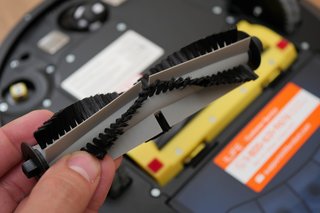
It’s able to get from place to place with relative ease and over thresholds, into other rooms too. It does a pretty good job of avoiding obstacles as long as you keep the floors clear.
We did, unfortunately, find that this robot vacuum cleaner got stuck or lost on numerous occasions though. The navigation system doesn’t seem to be entirely up to the task and the A9 would more often than not fail to find its way back to the charging dock – no matter where it was placed around the home.
It would also give up trying to do so and simply stop somewhere in the house and would have to be sought out and manually returned to its home. This happened even when there weren’t any obstacles in the way and no logical reason for the problem.
In Auto mode, the A9 cleaned for up to 102 minutes before its battery ran low and it automatically returned to its base station. That’s a solid result, beating several other Editors’ Choice robot vacuums, including the Ecovacs Deebot N79S, the iRobot Roomba 960, the iRobot Roomba i7+, the iRobot Roomba s9+, and the Neato Botvac D4 Connected—all of which lasted less than 100 minutes in testing. It falls short of the Neato Botvac D7 Connected, which clocked 130 minutes of cleaning time, the longest battery life of any robot vacuum we’ve tested.
How does iLife A9 robot vacuum work?
The iLife A9 robot vacuum uses two spinning side brushes on the underside of the robot to pull dust and debris into the central cleaning path.
There is a wide brushroll roller that then spins and collects debris from the floor and pulls it into the dust bin.
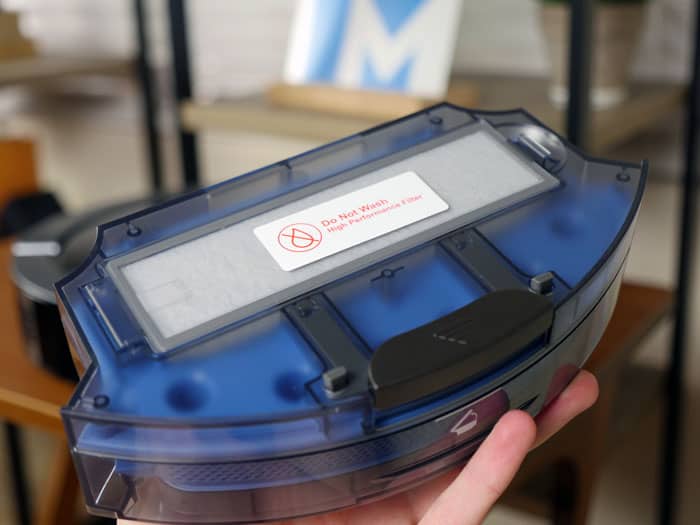
One unique feature of the iLife A9 robot vacuum compared to other robots is the cellular dust bin.
Cleaning Modes
There are 4 different cleaning modes on the iLife A9.
The modes includes:
- Auto: In Auto mode, the A9 will navigate the space, automatically deciding where to go and what level of suction is appropriate. This is the best mode if you want a “set it and forget it” type of cleaning approach.
- Edge: During Edge cleaning, the A9 will navigate along the perimeter of the room, focusing on edges only. This is a nice option if the rest of your room still needs has a bit of clutter or if you’re noticing debris along the edge of your space.
- Spot: Spot cleaning allows you to put the robot in one certain spot that needs to be addressed. When spot cleaning, the A9 will start in the middle and works its way out in a circular path until the entire small area has been cleaned.
- Max: In Max mode, the iLife A9 will use maximum suction power to deep clean whatever flooring type it comes across. This is useful for high pile carpets or particularly high-traffic areas.
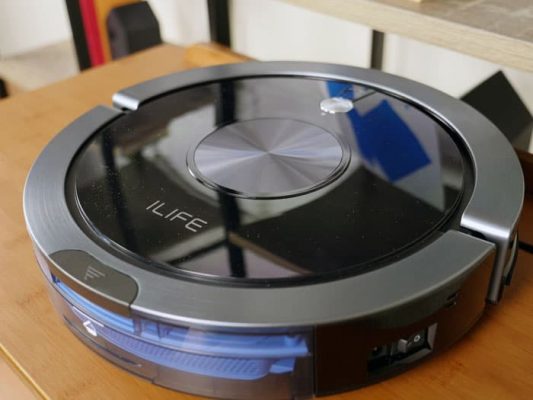
Parts & Accessories
Regarding parts and accessories, the iLife A9 keeps it pretty simple. It comes with all of the parts you need to get to cleaning, as well as a few extra bonuses.
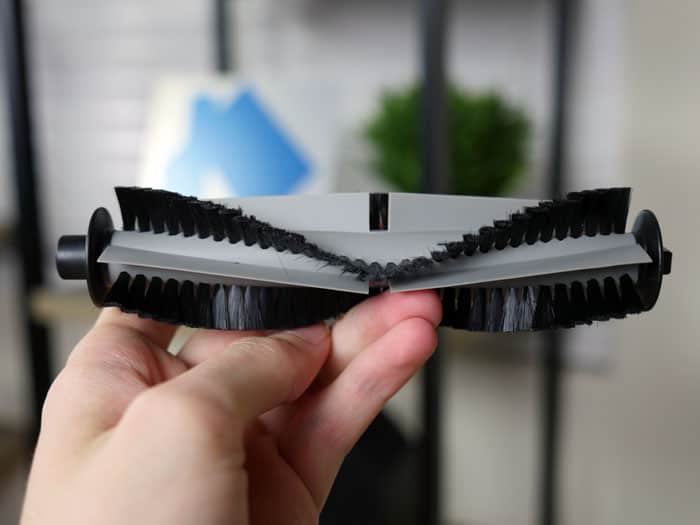
For example, the A9 comes with extra filters and extra spinning side brushes. These bonuses are things you’d have to buy eventually anyway, so it adds to the overall value of the A9 to have these things come with the initial purchase.
What’s in the box?
- iLife A9 robot vacuum
- Side spinning brushes (two for install and 2 extra) x 4
- Rubberized brushroll x 1
- Bristle brushroll x 1
- Virtual boundary barrier x 1
- HEPA filters (1 for install and 1 extra) x 1
The virtual boundary (shown below) uses an infrared light to shine a beam across the room. When the beam comes in contact with a solid wall, it creates a virtual boundary that will prevent from iLife A9 from extending beyond that point.
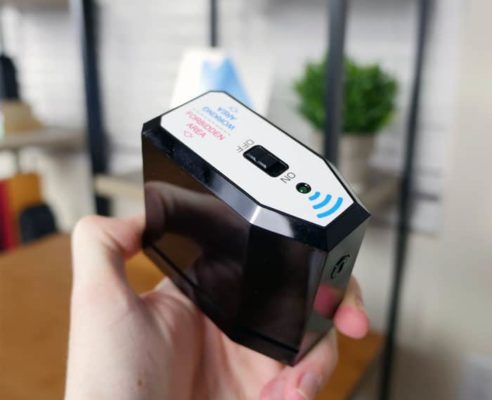
Setup & Usability
Setup for the iLife A9 is simple. To get started, all you need to do it:
- Unbox the vacuum and remove all packaging.
- Install filters and snap spinning brushes in place (if they aren’t already installed).
- Charge the vacuum.
- Press start.
If you want to start off with scheduled cleanings or voice commands you’ll need to pair the vacuum with the appropriate tools.
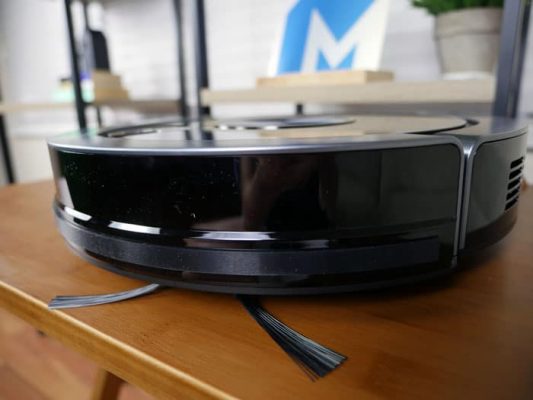
For scheduled cleanings, you’ll need to download the iLife app to your smartphone. Once you have the app, you can control the A9 robot by using simple controls on your smartphone from within the app.
For voice-controlled cleanings, you’ll need to own an Amazon Alexa device, like the Amazon Echo Plus or Echo Dot. Voice control can be as simple as “Alexa, vacuum the house” and it will get to work, for instance.
iLife A9 Maintenance
Maintenance on the iLife A9 consists of regular tasks you’d need to do with virtually any robot vacuum. For instance, the following maintenance tasks on the A9 would include:
- Dust bin – empty as needed
- HEPA filter – clean and replace as needed
- Central brushroll – clean and replace as needed
- Side spinning brush – clean and replace as needed
- Battery – replace as needed
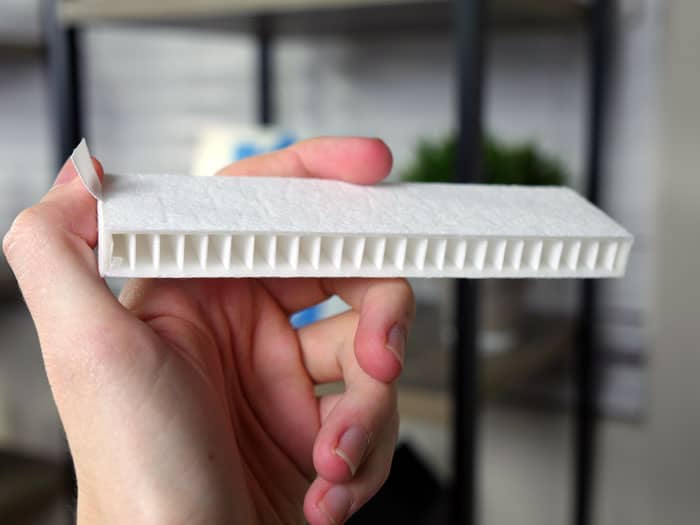
iLife A9 robot vacuum performance review
The iLife A9 robot vacuum was a superb performer in terms of overall cleaning performance across all floor types, averaging 97% debris removed. Please note, we used MAX mode for all cleaning tests.
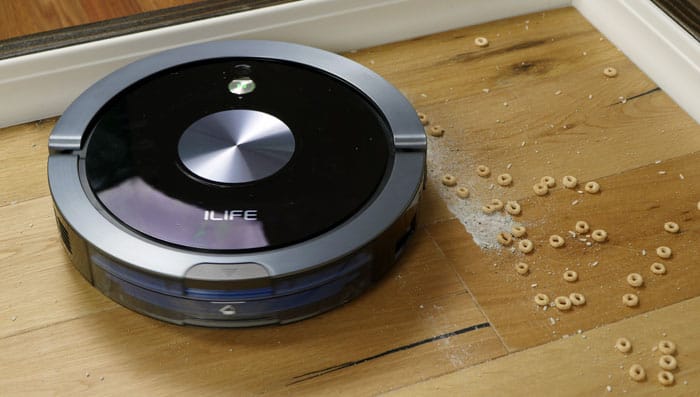
- Overall 97%
- Hardwoods 99%
- Low Carpet 92%
- High Carpet 99%

Similar to other robot vacuums, when on MAX mode, the performance was nearly flawless, but the run time was drastically reduced.
When cleaning hard surfaces, MAX mode wouldn’t provide as much of an advantage as it would on carpets.
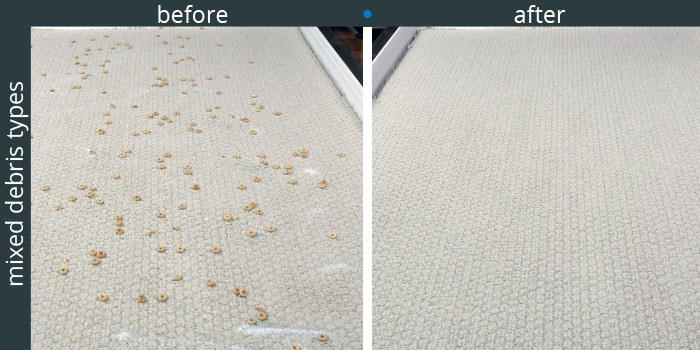
During our tests, it wasn’t immediately clear why the results on low carpet were less than the results on high carpet.

This could have been due to some kind of overseen variance in our testing strategy or something particular about the design of the A9.
In any case, cleaning performance was solid across the board.
